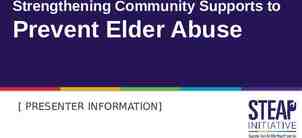FIRST AID INSTRUCTOR: SSG ROSALES
36 Slides1.03 MB

FIRST AID INSTRUCTOR: SSG ROSALES

OUTLINE EVALUATE A CASUALTY PUT ON A FIELD OR PRESSURE DRESSING APPLY DRESSING TO AN OPEN HEAD WOUND SPLINT A SUSPECTED FRACTURE PREVENT OR CONTROL SHOCK

EVALUATE A CASUALTY

EVALUATE A CASUALTY CHECK FOR RESPONSIVENESS a. Ask in a loud, but calm voice “Are you okay?” b. Gently shake or tap the casualty on the shoulder. c. Watch for a response. d. If the casualty is conscious, ask where it hurts.

EVALUATE A CASUALTY CHECK FOR BREATHING a. Look for the rise and fall of the casualty’s chest b. Listen for breathing by placing your ear about 1 inch away from the casualty’s mouth and nose. c. Feel for breathing by placing your cheek about 1 inch above the casualty’s mouth and nose. d. If casualty is not breathing, stop the evaluation and begin treatment.

EVALUATE A CASUALTY CHECK FOR BLEEDING a. Look for spurts of blood or blood-soaked clothin b. Look for entry and exit wounds. c. If bleeding is present, stop the evaluation and begin treatment.

EVALUATE A CASUALTY CHECK FOR SHOCK a. Look for signs/symptoms of shock. Sweaty but cool skin Paleness of the skin Thirst Confusion Blotchy or bluish skin, mostly around the mou b. If signs or symptoms of shock are present, stop the evaluation and begin treatment.

EVALUATE A CASUALTY CHECK FOR FRACTURES a. Look for the following signs/symptoms of a neck or back injury. Pain or tenderness in the neck or back area Cuts or bruises in the neck or back area Inability of a casualty to move Loss of sensation in the arms and legs b. Check the casualty’s arms and legs for fractures. c. If signs or symptoms of fractures are present, stop the evaluation and begin

EVALUATE A CASUALTY CHECK FOR BURNS a. Look carefully for reddened, blistered, or charred skin. b. Check for singed clothing. c. If signs or symptoms of burns are present, stop the evaluation and begin treatment.

EVALUATE A CASUALTY CHECK FOR HEAD INJURY a. Look for the following signs and symptoms. Unequal pupils Loss of memory or consciousness Dizziness Fluid from the ear(s), nose, mouth, or injury s b. Continue to watch for signs which would require performance of mouth-to-mouth resuscitation, treatment for shock, or control of bleeding, and seek medical aid.

EVALUATE A CASUALTY Check Check Check Check Check Check Check for for for for for for for Responsiveness Breathing Bleeding Shock Fractures Burns Head Injuries

PUT ON A FIELD OR PRESSURE DRESSING

Expose the wound

Grasp dressing, white side down

Secure dressing in place directly over wound Wrap tails so that dressing is covered and both sides are sealed

Apply firm manual pressure over the dressing for 5 to 10 minutes Elevate above the level of the heart unless a fracture is suspected and has not been splinted

If bleeding continues, apply pressure dressing Place a wad of padding directly over the wound Wrap improvised dressing tightly around the wound. Secure directly on top of wound.

APPLY DRESSING TO AN OPEN HEAD WOUND

For an injury on the forehead, grasp dressing, white side down

Wrap tails horizontally

Cross tails

Tie Tails (Do Not Cover the Eyes or Ears)

For an injury on top of the head, place white portion directly on wound

Wrap ties under the chin

Cross Tails

Bring one tail across the forehead above the eyebrows, and the other tail over the back of the head. Tie tails using nonslip knot.

SPLINT A SUSPECTED FRACTURE

SPLINT A FRACTURE a. Prepare the casualty for splinting the fracture. b. Gather splinting materials Splints, ties, and padding c. Pad the splints where they will touch any bony part of the body, such as wrist, elbow, ankle, or knee. Also pad where they will touch the crotch or armpit. d. Check for signs of blood circulation. e. Apply splint.

Do not try to reposition or straighten the fracture

Tie nonslip knots above and below the fracture site. Check to make sure ties will securely hold splinting materials in place, but do not impair

When splinting elbow fractures, or when a suspected fracture cannot be splinted, apply a swathe above and below the fracture site. Swathes

PREVENT OR CONTROL SHOCK

PREVENT OR CONTROL SHOCK SIGNS OR SYMPTOMS Sweaty but cool skin Paleness of skin Nausea Restlessness and confusion Blotchy or bluish skin Thirst Loss of blood Fast breathing rate

PREVENT OR CONTROL SHOCK Position the casualty. Move casualty to cover if situation permits Lay the casualty on their back unless a sitting position will allow the casualty to breath easier Elevate the casualty’s feet higher than

PREVENT OR CONTROL SHOCK Loosen up restrictive clothing at the neck, waist, or anywhere it is binding Prevent the casualty from chilling or overheating Calm and reassure the casualty Seek medical aid

QUESTIONS






